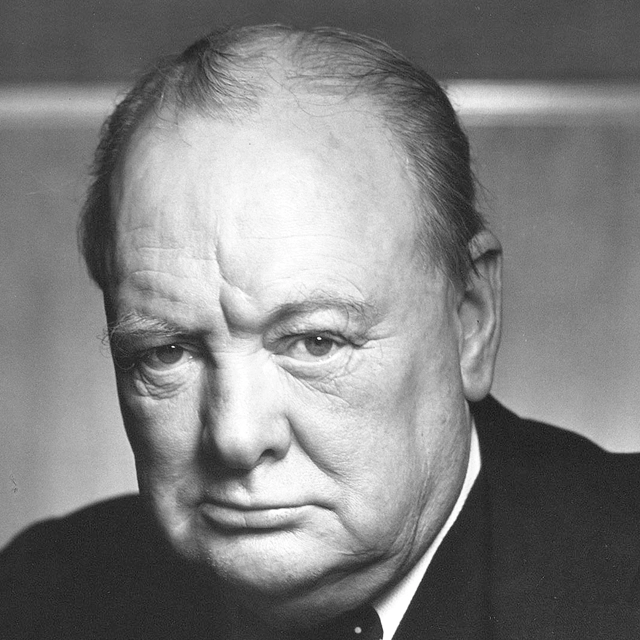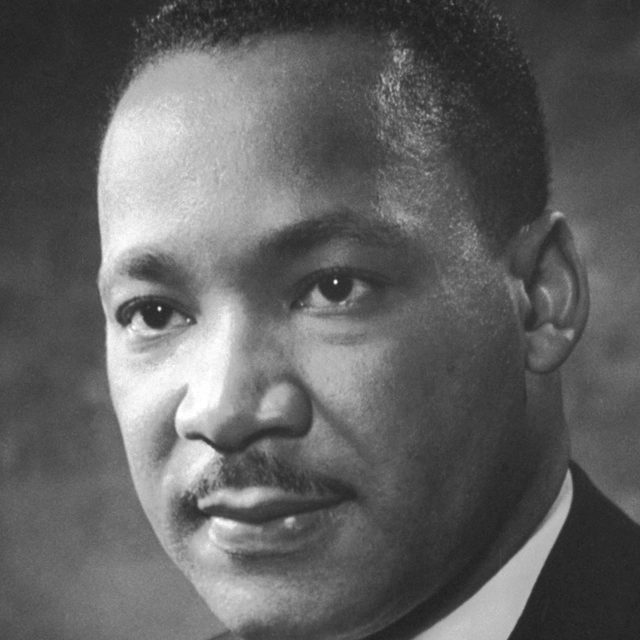Fracture Audiobook Summary
Barack Obama’s speech on the Edmund Pettus Bridge to mark the fiftieth anniversary of the Selma to Montgomery marches should have represented the culmination of Martin Luther King Jr.’s dream of racial unity. Yet, in Fracture, MSNBC national correspondent Joy-Ann Reid shows that, despite the progress we have made, we are still a nation divided–as seen recently in headline-making tragedies such as the killing of Trayvon Martin and the uprisings in Ferguson and Baltimore.
With President Obama’s election, Americans expected an open dialogue about race but instead discovered the irony of an African American president who seemed hamstrung when addressing racial matters, leaving many of his supporters disillusioned and his political enemies sharpening their knives. To understand why that is so, Reid examines the complicated relationship between Barack Obama and Bill and Hillary Clinton, and how their varied approaches to the race issue parallel the challenges facing the Democratic party itself: the disparate parts of its base and the whirl of shifting allegiances among its power players–and how this shapes the party and its hopes of retaining the White House.
Fracture traces the party’s makeup and character regarding race from the civil rights days to the Obama presidency. Filled with key political players such as Shirley Chisholm, Jesse Jackson, John Lewis, and Al Sharpton, it provides historical context while addressing questions arising as we head into the next national election: Will Hillary Clinton’s campaign represent an embrace of Obama’s legacy or a repudiation of it? How is Hillary Clinton’s stand on race both similar to and different from Obama’s, or from her husband’s? How do minorities view Mrs. Clinton, and will they line up in huge numbers to support her–and what will happen if they don’t?
Veteran reporter Joy-Ann Reid investigates these questions and more, offering breaking news, fresh insight, and experienced insider analysis, mixed with fascinating behind-the-scenes drama, to illuminate three of the most important figures in modern political history, and how race can affect the crucial 2016 election and the future of America itself.
Other Top Audiobooks
Fracture Audiobook Narrator
Joy-Ann Reid is the narrator of Fracture audiobook that was written by Joy-Ann Reid
Joy-Ann Reid is a political analyst for MSNBC and the host of The ReidOut. She is the author of Fracture: Barack Obama, the Clintons, and the Racial Divide and co-editor (with E. J. Dionne Jr.) of We Are the Change We Seek: The Speeches of Barack Obama. A graduate of Harvard University, she is the former managing editor of TheGrio.com, and her columns and articles have appeared in the New York Times, New York magazine, the Guardian, the Miami Herald, and Salon.com. She lives in Brooklyn, New York, and Maryland.
About the Author(s) of Fracture
Joy-Ann Reid is the author of Fracture
More From the Same
- Author : Joy-Ann Reid
- The Man Who Sold America
- Publisher : HarperAudio
- Abraham
- American Gods [TV Tie-In]
- Dead Ringer
- House of Sand and Fog
- Prey
Fracture Full Details
| Narrator | Joy-Ann Reid |
| Length | 10 hours 54 minutes |
| Author | Joy-Ann Reid |
| Category | |
| Publisher | HarperAudio |
| Release date | September 08, 2015 |
| ISBN | 9780062331953 |
Subjects
The publisher of the Fracture is HarperAudio. includes the following subjects: The BISAC Subject Code is Elections, Political Process, Political Science
Additional info
The publisher of the Fracture is HarperAudio. The imprint is HarperAudio. It is supplied by HarperAudio. The ISBN-13 is 9780062331953.
Global Availability
This book is only available in the United States.
Goodreads Reviews
Will
March 08, 2017
By forcing the party, and particularly his fellow southerners to reckon with the country’s ongoing racial strife, [Lyndon] Johnson had thrown open the doors to a growing and increasingly liberal and African American base. But he had also driven scores of white Democrats into the arms of the Republican Party and a growing conservative movement that was quickly organizing around opposition to all that his administration had stood for. The Democratic Party has struggled with issues of race for quite a long time. But the 1960s brought a sea change in the form of The Civil Rights Act of 1964 and the Voting Rights Act of 1965. The party that had stood up for racism, particularly in the South, had taken a turn toward decency. The political cost would be significant, particularly when Richard Nixon (and all subsequent Republican presidential candidates), applying his Southern Strategy, wooed white southern voters with dog-whistle appeals to racism. But the trend was clear. The party was shifting from a majority white institution to one that needed to cobble together a coalition of diverse elements. And most significant among this was a need to solidify the black voter base.Joy-Ann Reid MSNBC host Joy Reid looks at the racial strains within the Democratic Party from the 1960s to the present. While the book was originally published a few years back, the version I read was updated to include at least some of the 2016 presidential race. She looks at some of the players, with an emphasis on Jesse Jackson, Tavis Smiley, Cornell West, Al Sharpton and a few others. She examines the growth in black influence in the party, the tensions within the black political and civil rights community, and the conflict between supporters of the Clintons and black presidential aspirants. For those of us who attend to political goings on, this is fascinating stuff. Too much of this reads like middle-school, which is unfortunate. Not the text, which is crisp and professional, but the ego and turf battles. One particularly dark episode was in how Shirley Chisolm’s presidential candidacy was treated by the black power elite. We can see also the sort of purity fixation that other segments of the party have recently taken to espousing to the detriment of just about everyone but Republicans. It is pretty clear that when one takes an attitude of my way or the highway, no one gets to go anywhere. How far can one bend before breaking? Where does compromise leave off and capitulation begin? One of the real concerns portrayed in the book is the question of how far one can wander from Democratic principles without abandoning the core. Bill Clinton’s welfare reform legislation was a major tilt toward the Republicans, an attempt to inoculate himself against right-wing attacks on Dems as being soft on welfare fraud. There were plenty more of this sort, from DOMA to allowing Wall Streeters way too much leeway. But Reid points out that the eight years of the Clinton administration were very productive in terms of boosting black participation in the government, and making gains in fair housing. Was the tradeoff worth it? Would Clinton have lost those elections had he not triangulated the way he did?There are some pretty blatant political smacks in the face delivered here. Bill Clinton, in particular, was not exactly close with Jesse Jackson. During his first presidential run, Clinton took the opportunity, while attending a Rainbow Coalition meeting in DC, hosted by Jesse Jackson, to attack statements made by rap artist Sister Souljah. The choice of venue for that statement, rather than the statement itself, constituted a significant bit of political back-stabbing.Reid goes into some of the blow-by-blow behind-the-scenes battles that went on when Hillary and Obama were contending for the nomination in 2008. Loyalty and personal history banging up against identity. Interesting political sausage-making material. She offers some criticism of Obama for reacting way too fast to dishonest right-wing provocations in order to protect himself, comparing this to Bill Clinton doing the same thing. Some things do not seem to change much.Hillary comes across relatively well here. She actually does have a history of working for civil rights, and has nurtured her relationships in the black community. It was a real struggle for many when faced with the choice of sticking with Hillary or going with the new rising star. One interesting item was on the difficulty Bernie Sanders had wooing black voters. Sanders’s difficulty connecting with the mass of black voters was a sore point for his campaign, particularly since it was the key factor preventing him from gaining the nomination of the party he’d only formally joined several months after announcing his bid for president in April 2015.…the real explanation was simpler. Sanders had a fundamental discomfort addressing the immovable barrier of race, which loomed over his economic-based complaint like a giant pylon. He often struggled to incorporate Black Lives Matter into his message, even as many of its young leaders flocked to his banner. The Democratic Party has plenty of challenges ahead, with or without Vladimir Putin, and treasonous administration officials tilting the scale against it. But there are reasons for optimism. Minority population gains will increase both the raw numbers of potential voters and the percentage of voters in the years ahead who are likely to register Blue. It remains a question whether Republican-controlled state governments will succeed in preventing those voters from being able to cast their ballots. They are certainly trying, and the current administration will do all it can to limit or eliminate voting rights for likely Democratic voters. It helps one understand what is up with the insistence on building a wall, and on transforming the ICE officers into a new Gestapo when one considers that Hispanic voters are likelier to vote Democratic. On the other hand, the resistance to Trump so far has been considerable and appears to have legs. Time will tell whether protests will translate into votes this time around. Reid’s look at a half-century of the Democratic Party is illuminating, both in negative and positive ways. Yeah, some people can be venal and maybe too willing to yield when they should hold firm. Others can be too rigid, to the detriment of all. But the overall trend within the party seems positive. Knowing where the party comes from, what it has gone through, and where it is headed should help us better understand the challenges it faces today and those that lie ahead. Reid has worked in TV and/or radio since 1997. She currently hosts AM Joy Saturday mornings on MSNBC. If you have not yet seen her show, I encourage you to give it a look. She is smart, charming, and very well informed. Review posted – March 3, 2017Publication date (this version) - 9/27/2016 – the original was published 8/8/2015=============================EXTRA STUFFLinks to the author’s personal, Twitter, and FB pages
Andre
February 13, 2016
A journalistic walk down Democratic Party history. Joy Ann Reid does a fantastic job of chronicling the transformation of the party from white southern conservatives to what we know it as today, the party of liberal multi-ethnics seen by many as the party of big government. She starts with 1964 and the LBJ years and takes us right up to 2015 and President Obama. This book covers a lot of the same area as Dyson's "The Black Presidency," often citing many of the same speeches and comments from Obama's time in office. The difference is Joy shows you how the democrats arrived at a point that the election of a Black president was possible. She is succinct in her plain prose making this a really approachable and breezy read. She refrains from injecting her own opinion and writes from the perspective of the reporter that she is. The book offers a keen insight into the game of politics, how an ally can quickly turn into a foe if the wrong words are said, or the need to appeal to a certain constituency is necessary.Joy Ann Reid makes quite a presentation in this book by delineating the need for not only shrewd advisors but courage, calculation and skill on the part of the political principals. Once you have read the book, you will possibly view politics in a different way, knowing full well that things are not always as they seem. There are some great moments in the book, most may be familiar as headlines, but her journalistic bona fides allows for more depth. An excellent production well worth the money.
Kathy
March 02, 2016
Reading this gave me a great deal of insight concerning the Black vote since the Civil Rights Act in 1965. Well written and engaging. I learned that the Black vote is a two-edged sword for the Democratic party. Although the GOP has no trouble being the party of racists, the Democratic party must attain a balance between the white workers and the black vote. Reid points out the difficulties and successes in doing this.
Mark
December 28, 2016
Reid covers more than just the Obama and the Clintons, but also the major racial-political events of the last 53 years impacting presidential races. She unveils the struggles of the Democratic party as it tries to move forward in a more diverse world, while not alienating the white base that it needs to regain seats in state and national offices.The need for open, honest conversations about race are critical to the future of our country. But when even President Obama is attacked - from the left and the right - when he tries to begin the conversation with sincere comments on the topic, we face a fractured path ahead.
Michael
September 28, 2015
This is a well-researched and informative look at politics and race. This book adds texture to the most divisive issue facing America today. The story is well-crafted and provides valuable insight on not only President Obama and the Clintons, but delves into the background of others who've shaped the lives of so many, and influenced both the Obamas and Clintons.
Tucker
January 01, 2018
Reid illustrates the historical evolution of racial polarization in the United States beginning in the 1960s when conservatives correctly predicted that the Democrats would eventually become "a party of ethnic minorities and liberal, northern whites, with almost no white presence south of the Mason-Dixon Line." Now, "particularly for African Americans, the Democrats are the only ball game...failure is not an option."In 1964, when Barry Goldwater, who opposed the Civil Rights Act, won the Republican nomination for president, Massachusetts attorney general Edward Brooke said "the Negro feels he was evicted from the Republican Party.” Democrats consequently "claimed the near-total support of black voters at 94 percent". That election had the highest nationwide turnout ever (69 percent of eligible voters), and the voters' choice of Johnson caused Martin Luther King Jr. to suggest that someday the nation might even elect a black president.Black voters' embrace of the Democratic Party was not uncomplicated, however. Johnson was, as president, initially known for his championship of the Civil Rights Act, the Voting Rights Act, and the War on Poverty, but later his reputation suffered from his escalation of the Vietnam War, and ultimately there wasn't a progressive to take his place. In the 1972 reelection of Nixon, fewer than half of black voters turned out. In 1976, campaigning against Nixon's heir Ford, Jimmy Carter chose to attempt to change the whites-only attendance policy at his Southern Baptist church rather than simply leave the church. In the 1992 campaign, Bill Clinton made some controversial efforts to appeal to white voters, such as (in his role as Arkansas governor) signing the death warrant for a mentally disabled black man, although the substance of his policy generally appealed to black voters.Whites without a college degree dramatically shifted from Democrats to Republicans (revealing "a fierce anti-black and anti-immigrant undertone," according to a professor of history) in the 1994 midterm election, and black and Hispanic turnout was low. A New York Times article"pointed to black voters declaring their frustration not just with Republicans, but with Democrats, who, while desiring black votes, rarely articulated a defense of black personhood in the face of conservative attacks. No longer was there a JFK willing to publicly challenge the country, or an LBJ to push his coregionalists on matters of civic fairness or even simple interracial civility. The Democrats had become the 'tough on crime' party, the 'hundred thousand cops' party, and the party that tossed Lani Guinier overboard."Racial polarization along political party lines became more absolute and crystallized surrounding Obama's presidency. In the middle of Obama's first term, the 2010 midterm election saw, in the South, 9 out of 10 white voters choosing Republicans and 9 out of 10 black voters choosing Democrats, demonstrating "the 46-year transition from a multiracial Democratic political dominance to a white conservative Republican political dominance.” A January 2015 poll found that Republicans and Democrats were polarized on race questions that were not even political, such as whether the film 12 Years a Slave deserved an Academy Award or whether an NBA team owner who had made racist statements should have to sell the team. As the 2016 election approached, Republicans feared that Trump would permanently alienate Hispanic voters from the Republican Party the way that Goldwater had alienated black voters 52 years earlier. A March 2016 poll found that nearly three-quarters of Trump supporters"stated they believed American culture had changed for the worse since the 1950s, and strong majorities resented hearing non-English speakers, exhibited strong degrees of racial resentment, and shared a belief that society had become too 'soft and feminine.' Studies and exit polls found Trump supporters highly suspicious of trade, resistant to immigration, and beset by feelings of powerlessness and national decline."In the 1950s, 60 percent of American voters were white and working-class, but now that race and education demographic is shrinking by two percentage points every four years (according to David Bositis of the Joint Center for Political and Economic Studies). It therefore remains to be seen in the long term how this polarization will endure and continue to manifest.This was a nuanced and illuminating history, originally published 2015 and with a 2016 afterword about the Clinton/Trump contest dated several months before the election.Although Reid wrote about President Johnson, her history begins in 1964 and did not mention the Johnson Amendment passed ten years before that when Johnson was still a senator. Stephen Mansfield's Choosing Donald Trump: God, Anger, Hope, and Why Christian Conservatives Supported Him finds roots of the current racial/political polarization (more specifically, of white evangelicals' support for Trump) in the chafing of some religious leaders at the IRS rule (originated by a Democratic politician) that prevents them from endorsing political candidates, which Trump has promised to repeal (though he has not yet succeeded). I previously blogged extended thoughts about Mansfield's book and have amended it slightly to mention Reid's book.
Barry
December 16, 2015
This is a very comprehensive study of the role of race and racism in American politics. Author Reid takes as her starting point the 1954 decision by the Supreme Court in Brown v. Board of Education to outlaw segregation in public schools, and of course the turmoil that followed. And then she moves on to 1956's The Southern Manifesto, in which a hundred Southern legislators got together to basically say: "Hell no, we ain't going to do it, and the Supreme Court can't make us." Joy-Ann Reid does a good job of detailing the hatred, fear, and anger that took hold during this period when the Right just didn't want to budge on racial equality. The book then discusses the Civil Rights Act of 1964 and the Voting Rights Act of 1965 and the darkening mood of the country as legislated civil rights took hold and the Vietnam War devolved into an unwinnable war. And as the presidents come and go, Author Reid details the mood of the nation at large, and what their policies and philosophies did to the country and specifically to African Americans. The Obama-Clinton primary is covered in depth, as is the Obama Presidency, the growing trend of shootings by white police officers on unarmed black pedestrians, and the Supreme Court's vote to essentially gut the Voting Rights Act of 1965. This is must reading if you're going the polls in 2016.
Cale
March 07, 2018
I checked this out because I've been impressed with Joy-Ann Reid's Twitter feed, and was interested in getting her insights into the Democractic party in recent years. This book serves as a useful guide, going from Lyndon Johnson's Equal Rights Act through to the waning years of Obama's presidency, presenting the era through the eyes of the black populace. It is a very different view than I had on the era, and I appreciate how much Reid works to give multiple viewpoints their voices. Although there is definitely a specific viewpoint driving the narrative, it isn't in any way a myopic view; she presents the actions of different groups of black politics and shows how each group reacted to the different presidents and policies. I learned a lot about how the different organizations worked together (and in some cases worked against each other) to further their goals. The epilogue is the only piece that feels particularly dated - it was definitely expecting a different result for the 2016 election. But aside from that minor, unpredictable misstep, this is an eye-opening and informative documentation of the Democratic party's cultural and political movements from the perspective of one of its major groups, and definitely worth the read.
Beverly
October 24, 2016
Great book that brings to light the group, personal and political issues that affected Obama's entering the national political realm through almost the end of his terms. I knew a lot of the information however the way it was presented in a timeline like manner of how things interacted to bring forth the decisions made and the competing interests helped me to better understand how things came to be as they became. I highly recommend this text to bring a more 3 dimensional look at political divides and understand how they occur.
Gavin
August 20, 2016
This book is a really revealing historical account of the relationship between the two major American parties at black voters since the 1960's. It helped me understand many of the dynamics of this election more clearly, as well as giving much-needed insight into the last 8 years. I would certainly recommend this book to anyone who wants to more deeply understand the racial tensions in national electoral politics.
Sahar
November 30, 2015
Well ResearchedThe author did an excellent job of bringing this recent political history back to the forefront and making the connections to the climate today. A big plus was reading about the behind-the-scenes events that took place that the media didn't cover.
Kenyon
January 10, 2016
This book is an easy read and it gives you a perspective on Presidents Obama, Clinton and Secretary Clinton. I thoroughly enjoyed this read. Joy Reid did a fantastic job with book. I am looking forward to reading more from her as I am sure this is not her last book.
David
November 28, 2015
a rather disturbing book about race and the Democratic Party...about the rather complicated relationship between the Clintons and African Americans
Frequently asked questions
Listening to audiobooks not only easy, it is also very convenient. You can listen to audiobooks on almost every device. From your laptop to your smart phone or even a smart speaker like Apple HomePod or even Alexa. Here’s how you can get started listening to audiobooks.
- 1. Download your favorite audiobook app such as Speechify.
- 2. Sign up for an account.
- 3. Browse the library for the best audiobooks and select the first one for free
- 4. Download the audiobook file to your device
- 5. Open the Speechify audiobook app and select the audiobook you want to listen to.
- 6. Adjust the playback speed and other settings to your preference.
- 7. Press play and enjoy!
While you can listen to the bestsellers on almost any device, and preferences may vary, generally smart phones are offer the most convenience factor. You could be working out, grocery shopping, or even watching your dog in the dog park on a Saturday morning.
However, most audiobook apps work across multiple devices so you can pick up that riveting new Stephen King book you started at the dog park, back on your laptop when you get back home.
Speechify is one of the best apps for audiobooks. The pricing structure is the most competitive in the market and the app is easy to use. It features the best sellers and award winning authors. Listen to your favorite books or discover new ones and listen to real voice actors read to you. Getting started is easy, the first book is free.
Research showcasing the brain health benefits of reading on a regular basis is wide-ranging and undeniable. However, research comparing the benefits of reading vs listening is much more sparse. According to professor of psychology and author Dr. Kristen Willeumier, though, there is good reason to believe that the reading experience provided by audiobooks offers many of the same brain benefits as reading a physical book.
Audiobooks are recordings of books that are read aloud by a professional voice actor. The recordings are typically available for purchase and download in digital formats such as MP3, WMA, or AAC. They can also be streamed from online services like Speechify, Audible, AppleBooks, or Spotify.
You simply download the app onto your smart phone, create your account, and in Speechify, you can choose your first book, from our vast library of best-sellers and classics, to read for free.
Audiobooks, like real books can add up over time. Here’s where you can listen to audiobooks for free. Speechify let’s you read your first best seller for free. Apart from that, we have a vast selection of free audiobooks that you can enjoy. Get the same rich experience no matter if the book was free or not.
It depends. Yes, there are free audiobooks and paid audiobooks. Speechify offers a blend of both!
It varies. The easiest way depends on a few things. The app and service you use, which device, and platform. Speechify is the easiest way to listen to audiobooks. Downloading the app is quick. It is not a large app and does not eat up space on your iPhone or Android device.
Listening to audiobooks on your smart phone, with Speechify, is the easiest way to listen to audiobooks.






























